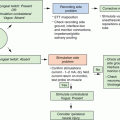© Springer International Publishing Switzerland 2016
Celestino Pio Lombardi and Rocco Bellantone (eds.)Minimally Invasive Therapies for Endocrine Neck Diseases10.1007/978-3-319-20065-1_2424. Patient Counselling and Patients’ Involvement in Health Policy
(1)
EUPATI National Liaison Team, Rome, Italy
24.1 For Physicians
The relationship between doctors and patients in 2014 is a matter that raises several complex and intriguing issues. The interaction between health care providers, physicians, patients, care givers, pharmaceutical and device companies solicits the attention of both public and private stakeholders. Opinions and recommendations coming from different parties should not be considered as an undesired interference but as a possible dialogue between stakeholders with increased transparency.
24.1.1 Informed Patients
Patients can gather medical information through books and specialized journals; they can follow TV and radio programmes, but what makes the difference with the early 1990s is the Internet. In matter of seconds they can receive a comprehensive picture regarding the specific illness, the potential remedies (drugs and/or surgery), the most specialized medical centres and who are the most skilled physicians. Of course, all information should be accurately verified but, in general, patients do not have the scientific know-how to discriminate good from bad quality information. When you search for “thyroid” on the web, you can get up to 41,700,000 results in 0.18 s! The amount of information is unmanageable by patients and therefore, most of the time the attention is focused on the first results where reliable sources can be found (such as Wikipedia and websites managed by scientific organizations or patients organizations) but also other less neutral sources, often sponsored by profit stakeholders.
How to cope with Internet-informed patients is a new challenge for physicians. More than 30 years ago most patients would solely trust their doctor and had no choice (little medical information and no travelling possibilities). They would never question medical issues and would just “let it be” or “cross fingers” or “pray God”. Nowadays patients want to know more about the disease and its symptoms. They appreciate doctors willing to explain the treatment options and the expected effects and side effects. Sometimes they match the information coming from their doctor with the web.
The 2012 annual report of the European Patients Forum states that: “An effective empowerment strategy starts with promoting health literacy. This will equip patients with the knowledge and skills needed to take an active role in managing their health. It will help patients to get better information from health professionals to drive better and more cost-effective health outcomes. EPF believes that there is a need for a strategy on information to patients at EU level. High quality information on health, diseases and therapy options is vital to patient safety and empowerment”
More than ever it is crucial to take the time to give correct, transparent, patient-adapted explanations that reinforce the patient’s confidence and empower the patient-doctor relationship.
Informed patients are more responsible and compliant with treatment and physician’s advice therefore ultimately leading to improved health outcomes, quality of life and patient satisfaction.
Most medical liability lawsuits are not about bad medicine; they are about poor communication and strained interpersonal relationship. A strong doctor-patient relationship, exemplified by the physician’s presence to explain the proposed procedure and to answer pertinent questions, can be key in avoiding medical-legal issues [1].
Yet, doctor-patient communication is far from being good: in 2000 Britten et al. [2] identified 14 categories of misunderstanding, including: patient information unknown to the doctor (and vice versa); conflicting information given by different doctors and failures to communicate the reasons behind doctors’ decision making in 20 general practices in England.
A complication issue may definitely compromise the patient trust if there is a lack of communication. The patients can understand complications but they cannot accept negligence, misinformation and refusal of discussion.
On the other hand, pressure on surgeons is very high, strained between patients’ needs and counselling, surgical quality, error managing, lawsuits, defensive medicine and last but not least, spending reviews.
Patients’ awareness has grown and the contingency of suing doctors is much higher and this is also affecting the health care system, given that the so-called defensive medicine is a bad practice for everybody: doctors look at patients as potential plaintiffs, health care costs are rising given the insurance premiums and over-treatment, while over-treatment and over-diagnosis are not the best care for the patient. In a US physicians’ survey by Jackson Healthcare, 75 % of doctors say that they order more tests, procedures and medicines than are medically necessary in an attempt to avoid lawsuits. “Defensive medicine and the broken malpractice system are two of the major reasons that healthcare costs are soaring out of control” state Hal Scherz, MD and Wayne Oliver (Forbes 2013).
A no blame administrative compensation system is proposed by different patient-led non-profit organizations like “Patients for Fair Compensation”.
24.2 Informed Consent
Before surgery or any invasive alternative or any new technology procedure, an “informed consent” has to be signed by the patient proving he has received the correct information from his physician. It has been a long journey starting last century, when Judge Benjamin Cardoso (1914, New York Appeal Court) noted that “every human being has a right to decide what shall be done with his or her body”, thus establishing the concept of consent, where the patient has the right to accept or refuse treatment. In 1955, two cases arose where physicians had the duty to disclose potential surgical risks to patients: therefore, the concept of informed consent was established, requiring that patients freely consent to treatment and were fully informed about procedure’s risk, benefits and alternatives. In the following years, informed consent has become “the process by which the treating health care provider discloses appropriate information to a competent patient so that the patient may make a voluntary choice to accept or refuse treatment” [3].
This definition of informed consent says that we are facing a kind of contract where the two parties sign an agreement based on appropriate information and patient’s competency.
The appropriate information includes the following:
The nature of the medical treatment and procedure
Stay updated, free articles. Join our Telegram channel

Full access? Get Clinical Tree






